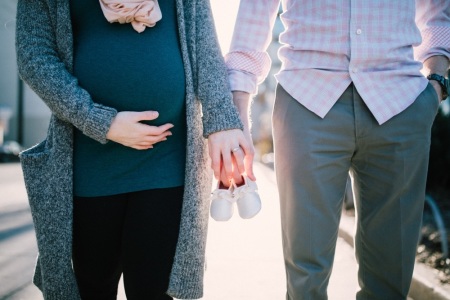US fertility rates drop to record low; 2019 births mark lowest in 35 years: CDC

Fertility rates in the U.S. have fallen to a new record low, according to the latest provisional data released by the CDC's National Center for Health Statistics.
Data from a May vital statistics report show that only 58.2 babies were born for every 1,000 women ages 15 to 44 in 2019, which represents a 2% drop in the general fertility rate from 2018.
That number is the lowest since federal record-keeping first started in 1909.
According to provisional CDC-NCHS figures, nearly 3.75 million babies were born in the U.S. last year. The figure indicates a 1% decrease from 2018 and a 35-year low.
Births in the U.S. peaked in 2007, having reached an all-time high of 4.32 million. According to the report, the birth rate has “generally been below replacement since 1971 and consistently below replacement since 2007.”
The ongoing decrease in fertility and births started during the Great Recession of 2007-2009, and reveals the substantially slower formation of families among millennials than previous generations since many are on a less solid financial footing.
“There are a lot of people out there who would like to have two children, a larger family, and there’s something going on out there that makes people feel like they can’t do that,” University of Rhode Island assistant professor of sociology and fertility scholar Melanie Brasher told The Wall Street Journal.
“People that were products of the Great Depression, the birth rates were much lower for that cohort than they were for people born after World War II,” she added, explaining how past times of economic hardship have affected birth rates.
Among the contributing factors for the overall decline was a leveling off of births among Hispanic women, who account for nearly a quarter of all U.S. births.
The only group of women who saw an increase in births was those in their 40s. The co-author of the government report, Brady Hamilton, told The Wall Street Journal that this is because women are delaying their childbearing years so they can complete their education and start their careers.
Pro-life activist Lila Rose, the president of Live Action, responded to the data.
"We need to fight for children & marriage more," Rose wrote in a tweet. "Instead, our society promotes sex outside of marriage, contraception & abortion. We create our own misery. We need a revolution to put family first."
In almost every year since 1971, the birth rate has been beneath the level of 2.1, which is the level necessary for the population to replace itself without immigration being a factor, the figures show.
Some expect that since more than 36 million Americans are now unemployed due to state-enforced shutdowns in response to the coronavirus, birthrates will continue to decline.






















